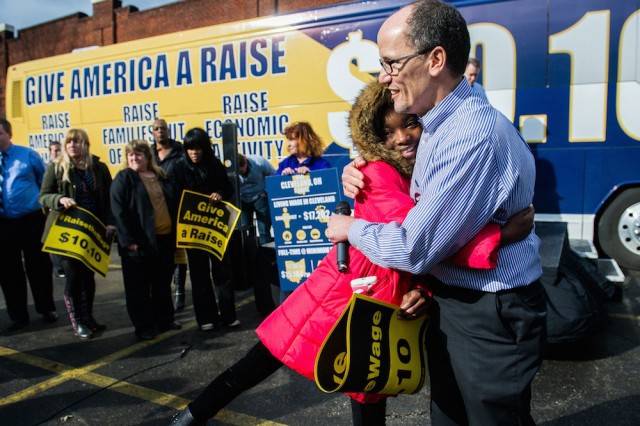The Year America Gets a Raise

The savings rate among Millennials is at negative 2 percent, partly due to stagnant wages coupled with increases in fixed costs. A bad labor market — lots of low-wage work available, but not enough ones with decent pay — have caused many young people to work multiple jobs to earn a living. As Carl E. Van Horn, director of the John J. Heldrich Center for Workforce Development at Rutgers, told the Times: “The only cure for young people in this position is an economic recovery of robust proportions.”
Neil Irwin, writing at The Upshot, says that robust economic recovery might be coming in the form of bigger raises in 2015. Irwin bases his prediction on three signs:
• The Labor Department’s monthly jobs reports have shown an upward trend in job openings. Employers with lots of jobs to fill may, as historical patterns suggest, offer higher pay and better benefits to make these jobs more attractive as the market becomes more competitive.
• A survey from the National Federation of Independent Business shows that small business owners expect to increase pay in the coming months.
• Aetna, the giant health insurer, is boosting the pay of its lowest-paid workers by as much as a third by setting its minimum hourly pay at $16 an hour starting in April (this is $33,000 a year for someone working a 40-hour workweek).
Perhaps these are signals that this is the year that the U.S. will finally end its six-year streak of stagnant wages. We can only watch and wait, but let’s hope that it’s true.
Photo: U.S. Dept. of Labor
Support The Billfold
The Billfold continues to exist thanks to support from our readers. Help us continue to do our work by making a monthly pledge on Patreon or a one-time-only contribution through PayPal.
Comments